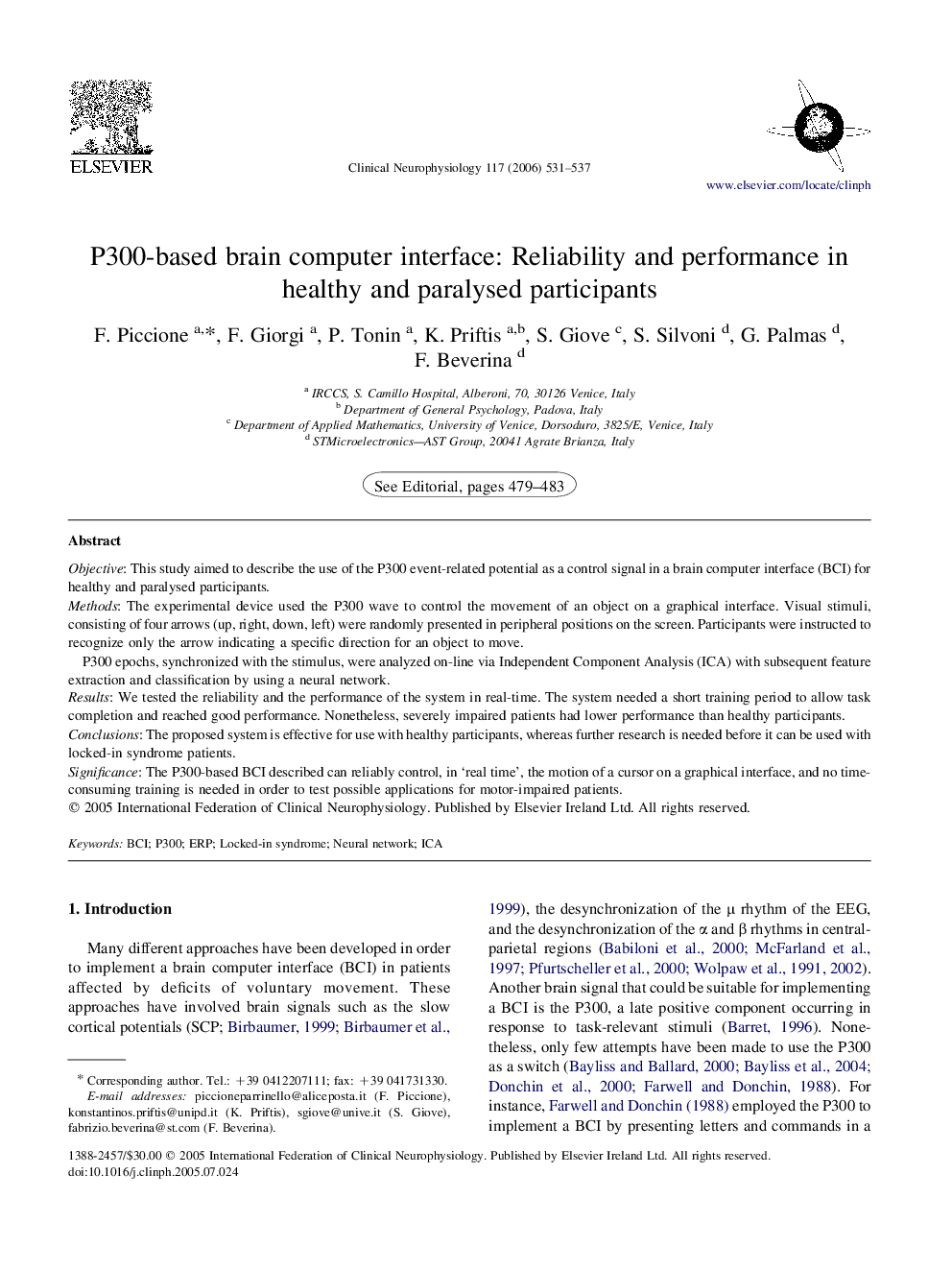| Article ID | Journal | Published Year | Pages | File Type |
|---|---|---|---|---|
| 3048423 | Clinical Neurophysiology | 2006 | 7 Pages |
ObjectiveThis study aimed to describe the use of the P300 event-related potential as a control signal in a brain computer interface (BCI) for healthy and paralysed participants.MethodsThe experimental device used the P300 wave to control the movement of an object on a graphical interface. Visual stimuli, consisting of four arrows (up, right, down, left) were randomly presented in peripheral positions on the screen. Participants were instructed to recognize only the arrow indicating a specific direction for an object to move.P300 epochs, synchronized with the stimulus, were analyzed on-line via Independent Component Analysis (ICA) with subsequent feature extraction and classification by using a neural network.ResultsWe tested the reliability and the performance of the system in real-time. The system needed a short training period to allow task completion and reached good performance. Nonetheless, severely impaired patients had lower performance than healthy participants.ConclusionsThe proposed system is effective for use with healthy participants, whereas further research is needed before it can be used with locked-in syndrome patients.SignificanceThe P300-based BCI described can reliably control, in ‘real time’, the motion of a cursor on a graphical interface, and no time-consuming training is needed in order to test possible applications for motor-impaired patients.
